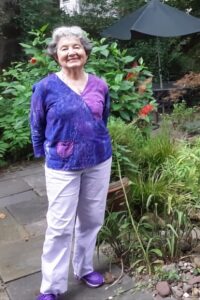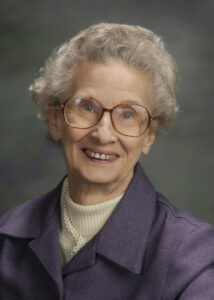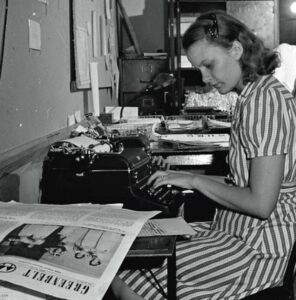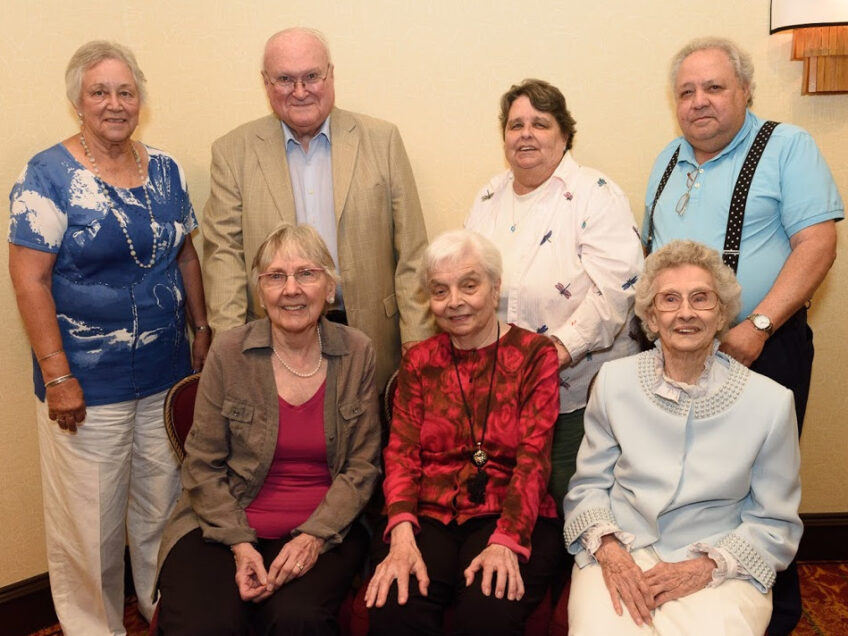Part I of a Two-Part Story
The history of the News Review is a story of strong women’s impact on Greenbelt, its cooperative institutions, its culture and community. It is a story of women’s accomplishments, especially since 1962, when 12 of the 18 person staff were women. Since that year, the editor has been a woman 94 percent of the time, including Mary Lou Williamson from 1972 to 2017 and since 2021; and the board presidents have been women since 1977, except for Bill Rowland and, briefly, Tom White. What kept them involved, often for decades, was the satisfaction they found writing factual, fair community news; spotlighting local residents; and their personal dedication to maintaining a respected news source that enables a cohesive, connected city and citizens.
By, For and About
The News Review’s core function is to report local government, Greenbelt Homes, Inc. (GHI), zoning, development, public infrastructure and education news, holding government accountable to citizens, and equipping Greenbelt residents for informed public debate and decision making, the backbone of democracy. It also covers local residents: their accomplishments, joys and tragedies. The newspaper is mostly a volunteer effort, by the people, for the people and about the people of Greenbelt. That began with Greenbelt’s 1937 founding, when applicant screening included willingness to be involved in community activities, and the first paper was published within six weeks after the first residents moved in. At that time women in Greenbelt were less likely to be employed outside the home, yet many Greenbelt wives were well-educated and well-informed, having grown up with newspapers, attended college and worked before marriage. They wanted to explore the community, and spend time with other adults, to make a difference in Greenbelt. The News Review offered (and offers) diverse roles, by day or evening, from a few hours to many, with token payment. For some women, the pay helped for incidentals, and the newspaper involvement gave them meaningful work, connections, and community.
Dorothy Sucher
(Writer, 1960- 1971)

Dorothy Sucher arrived in Greenbelt in 1957. “For a while I went quietly crazy in my GHI house surrounded by babies,” she wrote. She joined the Co-op Nursery, as a mother and board member, and the News Review. She said the News Review came to be her focus beyond her family, that people came to know her as herself, not a wife and mother, and she thrived. She later cofounded the Greenbelt Museum and founded the Women’s Investment Group of Greenbelt and the Greenbelt Writers Group. She was smart, artistic and wrote beautifully, producing city council reporting, feature stories and the opinion column Point of View. In addition to the News Review, she taught writing, was an essayist, a published mystery writer, a watercolorist, gardener and designed her Greenbelt home. In midlife she became a psychotherapist.
Sandra Lange (Writer and Layout, 1966-Present)

Sandra Lange filled leadership positions in the Greenbelt Homemaker’s Club, the League of Women Voters, the Eleanor and Franklin Roosevelt Democratic Club, chaired the Greenbelt Labor Day Festival, led Greenbelt’s 50th and 60th anniversary celebrations, and cofounded the Greenbelt Museum with Sucher, in conjunction with the 50th anniversary. She met Elaine Skolnik at a GHI meeting and, knowing Lange had been an English teacher, Skolnik recruited Lange to the Greenbelt News Review. Lange reported on topics including GHI board meetings and city government and services. She applied her artistic skills to arranging stories and display ads while laying out the paper.
Elaine Skolnik (Writer and Board President 1957-2015)
Elaine and Al Skolnik moved to Greenbelt in 1952. She said it was love at first sight: “Oh, those tall pines and oaks, the lake, the large green areas on which the playgrounds beckoned to the children, the cooperative babysitting club, the co-op nursery school and kindergarten. It was such a sweet life.” She served on the Park and Recreation Advisory Board, was president of the Co-op Nursery School and vice president of the Co-op kindergarten, and worked behind the scenes for council and GHI candidates. During 1960s and 1970s development battles, she was a leader of the steering committee of the Citizens for a Planned Greenbelt (CFPG), which formed to fight the Maryland-National Capital Park and Planning Commission’s 1965 College Park-Greenbelt Master Plan. The plan called for Greenbelt to become the second largest employment center in the state. In response, CFPG demanded the preservation of the concept of the planned community of Greenbelt.
Elaine began by reading her husband Al’s article drafts to ensure their understandability for readers. She nervously took on the Our Neighbors column, and much later reported on development issues. She didn’t drive, but spent hours on the phone, for Our Neighbors, organizing 1950s News Review fund drives and interviewing developers. Williamson wrote, “She was a super sleuth reporter interviewing developers, digging into the details of their projects and then writing about them in the newspaper, a challenging task she was proud of.”
After Al’s unexpected death in 1977, Elaine had a profound effect on the paper, providing guidance and strength at this time. Until 1986, she was News Review president, decided which news the paper should cover, assigned stories to reporters and continued her own investigative reporting, which she particularly treasured. She was thorough, tenacious and accurate.
Virginia Beauchamp (Writer and Editor, 1957-2016)

Virginia Beauchamp moved to Greenbelt in 1957 and said the News Review offered “an opportunity for adult conversation and to learn more about my new community.” She was a University of Maryland professor and scholar who later founded the University’s Women’s Studies program and was instrumental in implementing Title IX sex discrimination protections in Maryland educational institutions. She helped found the Women’s Action Coalition of Prince George’s County, served on the Prince George’s County Commission on Women to improve quality of life for local women and girls, and in 2003 was inducted into the Maryland Women’s Hall of Fame.
Beauchamp began in 1957 as a reporter and a senior copy editor until stepping away in 2016 at age 95. Williamson remembered her as a determined woman, with a husband in Vietnam, raising children, running the household, teaching, with no childcare resources, “and being paid squat!” Her requests to the university for pay comparable to her male colleagues were denied because “you have a husband,” when in fact his Army pay was minimal. Quiet, demure and tough, Williamson said “she pursued things she felt strongly about and carried those efforts into the paper.” Williamson said Beauchamp used her language skills to easily read and fix what wasn’t written well. “She taught and explained so people learned a lot. And she made sure we understood what the [news] issues really were. She was our professor.”
Mary Lou Williamson (Editor and Writer, 1962-Present)
Beauchamp recruited her neighbor Williamson in 1962, when the paper was assembling a 25th anniversary history of Greenbelt and she discovered Williamson had studied history. Williamson progressed to proofreading the paper and writing headlines, later becoming an accomplished city council reporter. She first became editor in 1964. Sucher and Williamson alternated the editor role between 1963 and 1967, upon the Sucher family’s temporary move to Switzerland where her husband worked at CERN and Williamson taking a maternity leave after Sucher’s return to Greenbelt.
As editor, Williamson worked to expand the size of the paper from four or six pages to eight, and much later to 12, increasing advertising revenue to fund more content.
Williamson wrote she has “…had a life-long love affair with newspapers. We were always a two-newspaper family when I was growing up in Chicago – Tribune in the morning, Sun Times in the evening. I had a brief stint as sports-page editor in ninth grade and three years on my college newspaper, two as business manager.” She moved here in 1962, filling leadership roles for the Greenbelt Nursery School and Eleanor Roosevelt Instrumental Music Parents Association, volunteered for the Greenbelt Municipal Swim Team, led a 4-H club and later edited the Greenbelt 50th anniversary book Greenbelt: History of a New Town.
Hard News
News Review history cannot be told without Al Skolnik, who set the standard for reporting news accurately, truthfully and fairly, without added interpretation. The News Review published both hard news (city council, GHI, city and county government, zoning and development) and more general community news. Al was board president and news editor.
The paper was and is a cooperative, with members filling their main roles, sharing roles, pitching in as needed and according to their interests, and mentoring new members to absorb the paper’s standards and culture. They learned journalistic writing and integrity by writing, being edited, proofreading others’ work and reading published articles.
Sucher, Williamson, Elaine Skolnik, Beauchamp and Al Skolnik were among those who covered city council, the GHI board and development issues. Sucher and Williamson were the writers reporting on October 1965 city council meetings for the News Review, at which real estate developer Charles Bresler (also a state delegate) requested a zoning variance to develop at higher density a parcel he owned in Greenbelt, when the city also wished to buy another parcel he owned, to build a high school. At the first council meeting, a citizen called his request “blackmail.” When the News Review reported it, Bresler, who was running for election as Maryland comptroller in 1966, sued the paper and board president Al Skolnik for libel for two million dollars, a suit which presented a First Amendment issue. Bresler won two lower court decisions in 1968 and 1969.
The News Review appealed to the U.S. Supreme Court, which in 1970 found for the newspaper, stating “the articles published in the News Review were accurate, full, and truthful reports of what had been said,” and that the newspaper was “performing its wholly legitimate function as a community newspaper when it published full reports of these public debates … [To do otherwise] would subvert the most fundamental meaning of a free press.”
The staff’s cooperative cross training paid off as Al, Elaine and others focused on the libel defense for four years. Williamson wrote “My job [as editor] was to keep the paper running smoothly.”
Mary Smith Granofsky (Writer 1964-67, Editor 1967-1972)
From 1967 to 1972, Mary Smith Granofsky was editor, with Dorothy Sucher as associate editor for a time. Granofsky was a master organizer and proofread the court briefs filed in the libel suit. In 1977 Granofsky said, “I’ve done two really good things in my life – raising good children and working on the News Review suit….”
Sustainment and Recruitment

In 1972 Mary Smith Granofsky passed the editor’s pen back to today’s editor Williamson, known for being tough, but warm and polished.
In 1980, three years after Al’s death, city manager Jim Giese realized Mary Lou had worked late Tuesday night assembling the paper, on Wednesday attended the same Upper Marlboro zoning hearing that he did, and Wednesday evening attended a council worksession. He sent a letter to the editor.
He wrote “the largest share of the [paper’s] work load and responsibilities fall upon the shoulders of Mary Lou and long-time News Review workaholic, Elaine Skolnik. … I urge all citizens of Greenbelt who consider it essential that Greenbelt have its own independent newspaper to consider how they can help to keep this newspaper going.” His 1980 plea brought Mavis Fletcher, Bill Rowland and Diane Oberg to the paper, followed by Pat Scully who responded to an ad seeking volunteers.
Diane and Pat are there today, on the staff and the board. Diane began working with ads, later laying out the paper, and supporting business manager Mary Halford. She began reporting in 1985 when Elaine asked her to write about election results; Mavis Fletcher trained her in city council reporting. Oberg said Elaine ensured staff learned the background they needed to be successful, which Oberg now does for new city council reporters.

